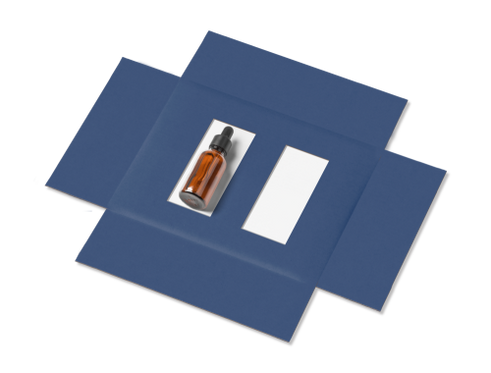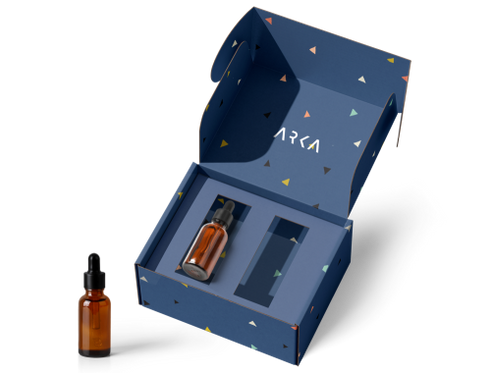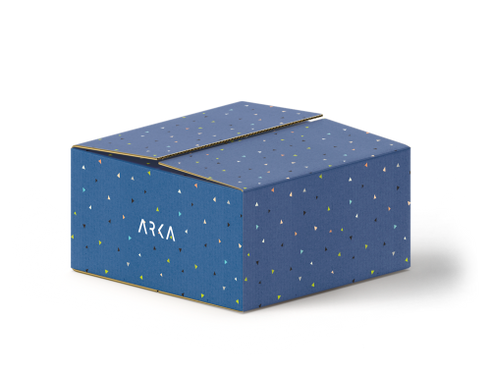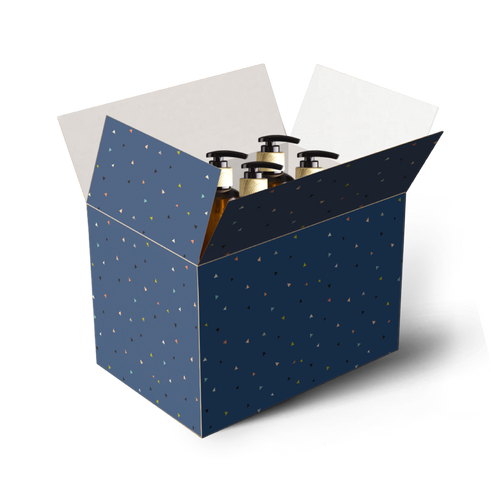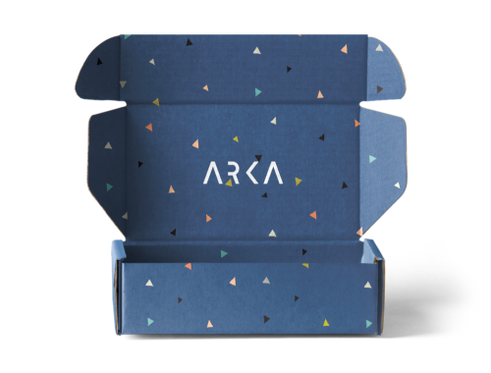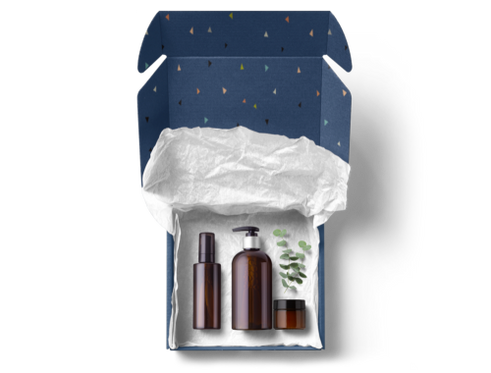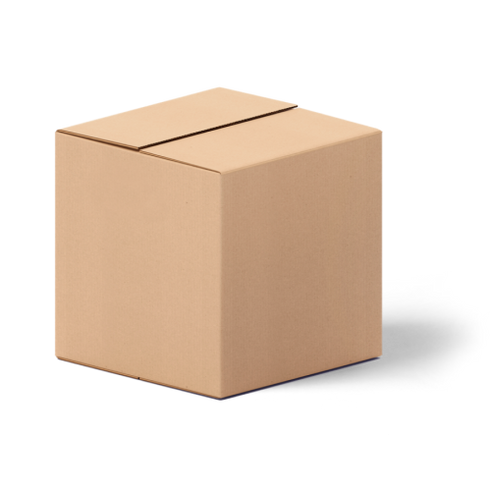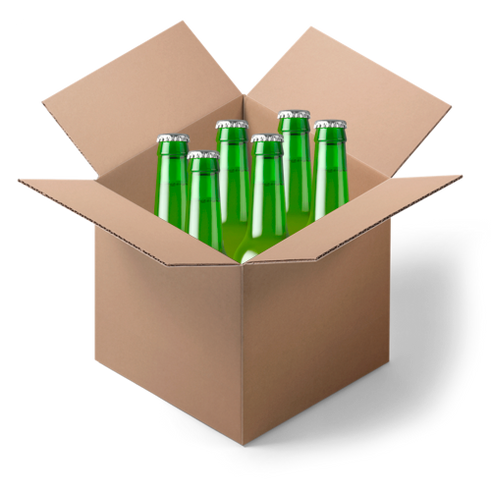Packaging 101: The Complete Guide
- Packaging 101
- Types of Packaging
- Aseptic Packaging
- Blister Packaging
- Biodegradable Packaging
- Bulk Packaging
- Carbon Neutral Packaging
- Circular Packaging
- Clamshell Packaging
- Compostable Packaging
- Cornstarch Packaging
- Corrugated Packaging
- Discreet Packaging
- Ecommerce Packaging
- Flexible Packaging
- Frustration Free Packaging
- Retail Packaging
- Secondary Packaging
- Smart Packaging
- Sustainable Packaging
- What is a PR Package?
- What is a Poly Mailer?
- Packaging Design Ideas
- AI Packaging Design
- Bakery Packaging Ideas
- Bath Bomb Packaging Ideas
- Bath Salt Packaging Ideas
- Body Butter Packaging Ideas
- Body Oil Packaging Ideas
- Body Scrub Packaging Ideas
- Brownie Packaging Ideas
- Cake Packaging Ideas
- Cake Pop Packaging Ideas
- Candle Packaging Ideas
- Candy Packaging Ideas
- Canva Packaging Design
- Chocolate Packaging Ideas
- Cinnamon Roll Packaging Ideas
- Clothing Packaging Ideas
- Coaster Packaging Ideas
- Coffee Bag Design Ideas
- Cookie Packaging Ideas
- Cosmetics Packaging Design
- Cotton Candy Packaging Ideas
- Cupcake Packaging Ideas
- DIY Packaging Ideas
- Dog Treat Packaging Ideas
- Food Packaging Ideas
- Empanada Packaging Ideas
- Etsy Packaging Ideas
- French Fries Packaging Ideas
- Frozen Food Packaging Ideas
- Hair Extension Packaging Ideas
- Handbag Packaging Ideas
- Jewelry Packaging Ideas
- Keychain Packaging Ideas
- Lash Packaging Ideas
- Lip Gloss Packaging Ideas
- Macaron Packaging Ideas
- Minimalist Packaging Ideas
- Mug Packaging Ideas
- New Employee Welcome Kit Ideas
- Packaging Colors
- Packaging Inserts Ideas
- Packaging Logo Design
- Packaging Typography
- Perfume Box Design Ideas
- Pizza Box Design Ideas
- Popcorn Packaging Ideas
- Scarf Packaging Ideas
- Skincare Packaging Design Ideas
- Soap Packaging Ideas
- Sock Packaging Ideas
- Sticker Packaging Ideas
- Sunglass Packaging Ideas
- Sustainable Packaging Ideas
- Tea Packaging Ideas
- Wax Melt Packaging Ideas
- Weed Packaging Ideas
- T-Shirt Packaging Ideas
- Wine Packaging Design Ideas
- What is a Packaging Engineer?
- Types of Packaging Materials
- Chipboard vs Cardboard
- Compostable Packaging Materials
- Alternatives to Plastic Packaging
- Edible Packaging Materials
- Food Packaging Materials
- Are Poly Mailers Recyclable?
- How to Recycle Cardboard Boxes
- How to Recycle Packaging Materials
- Medical Device Packaging Materials
- Mono Material Packaging
- Pharmaceutical Packaging Materials
- Plastic Food Packaging
- Protective Packaging Materials
- Reusing Packaging Materials
- Types of Packaging Foam
- Void Fill Packaging
- What is Chipboard?
- What is Kraft Paper?
- Offset vs Digital Printing
- RGB vs CMYK Printing
- Screen Printing vs Digital Printing
- Screen Printing vs Sublimation
- What is a Dieline in Packaging?
- What is Die Cutting?
- What is Digital Printing?
- What is Flexographic Printing?
- What is Glassine Paper?
- What is Offset Printing?
- What is Spot UV Printing?
- Why is 300 DPI Good for Printing?
- How to Estimate Shipping Costs
- How to Pack Glass for Shipping
- How to Mail a Bubble Mailer
- How to Make a Shipping Label
- How To Measure Box Dimensions and Sizes
- How to Ship Alcohol
- How to Ship Artwork
- How to Ship Books
- How to Ship a Cake
- How to Ship Candles
- How to Ship Clothes
- How to Ship Cookies
- How to Ship Food
- How to Ship a Laptop
- How to Ship a PC
- How to Ship Plants
- How to Ship Shoes
- How to Ship Vinyl Records
- Packaging Symbols
- Shipping Large Items
- What is a Delivery Exception?
- What is Shipping Insurance?

Britt Martin, Arka's Partnerships lead, blends e-commerce expertise with sustainability advocacy, nurturing startups as a Founder in Residence at NYU.
Key Advantages of Clamshell Packaging
Here are some of the advantages of clamshell packaging.
Product protection: clamshell packaging is commonly used for food items and other items that need to be covered, so protection and preservation are essential. Clamshell packaging secures and protects food from being contaminated and keeps food secure and stored correctly. Also, it helps to maintain the temperature and quality of food, keeping it tasty and fresh.
Eye-catching look: clamshell packaging is appealing and eye-catching to consumers. Some businesses choose to enhance the aesthetics of clamshell packaging by incorporating their branding’s colors, fonts, logos, and designs to catch the consumer's attention.
Transparency: even though some clamshell packaging is opaque, many consumers prefer transparent packaging. This is something that a lot of businesses choose when packaging their products because customers prefer visibility. Many consumers like to see the quality of the products before they buy, and it’s easy to identify flaws and defects when looking at products.

Credits: Visipak by Sinclair & Rush
User-friendliness: clamshell packaging is easy to open and use, which comes in handy for people with disabilities and mobility and sensory issues. Packaging that is hard to open is frustrating for customers to deal with.
Customization: as we stated previously, some businesses choose to redesign the look of clamshell packaging to appeal to customers. Clamshell packaging can be customized with different styles, looks and designs to match business needs, consumer expectations and brand identity.
Versatility: no matter the shape, size or style, clamshell packaging is versatile. It can be utilized in numerous ways and it’s effective at storing and securing most products.
Challenges and Limitations of Clamshell Packaging
Here are some of the disadvantages of using clamshell packaging.
• Clamshell packaging can’t be used for liquids. It is only suitable for solid products because of how it is designed and structured and the materials used to make this type of packaging. Liquids are likely to leak through clamshell packaging.
• Clamshell packaging is difficult to recycle and can be complicated, depending on the type of material used. If it’s made of plastic, then it’s harder to recycle and doesn’t biodegrade. However, if clamshell packaging is made of cardboard or compostable packaging, it’s easier to recycle or compost.

Credits: creativemarket.com
Factors to Consider for Clamshell Packaging
Here are some factors to consider for clamshell packaging.
Product Size and Shape
As a business owner using clamshell packaging, it’s important to consider the product size and shape.
You need to be able to select or design clamshell packaging that fits your products and will be easy to close. If your product is too big or has an intricate design, then it might make the use of clamshell packaging difficult.
Material Durability
Think about the type of material that you’d like to use for clamshell packaging for your products.
For example, would you like to use plastic or cardboard for fruit and vegetables? If your business serves hot food, using cardboard packaging would make sense.
Opt for clamshell packaging that will be durable enough to store and preserve your products.

Credits: Anirudh
Ease of Opening and Closing
Customers find it frustrating if they struggle to open packaging, especially if they have sensory or mobility issues. When selecting or redesigning clamshell packaging, be mindful of this.
Ensure that the packaging your business uses for its products is easy to open and close. If it’s easy to open, customers will be able to access and use the products quickly. If it’s easy to close, customers will be able to protect, store and preserve the products effectively.
Packaging Design and Aesthetics
Many businesses use clamshell packaging to stand out from the crowd, so ensure that you do the same to catch the eye of your target audience. Switch up the design and boost the aesthetics by implementing your brand’s identity (colors, copy and logos).
Environmental Considerations
Sustainability is top priority, so select clamshell packaging that aligns with this ethos. Using materials that are eco-friendly and compostable will impress customers and ensure that they do their part for the planet.

Credits: Wood Mackenzie
10 Types of Clamshell Packaging
Here are the 10 common types of clamshell packaging you can use for your products.
Plastic Clamshell Packaging
Plastic clamshell packaging consists of two joined pieces of thermoformed plastic joined together. It’s commonly used for products in grocery stores such as fruits and snacks.
It’s airtight and easily sealable, allowing for the products to last longer, and it’s transparent, meaning that customers can easily see the product before choosing to buy it.

Credits: Grace Han
Styrofoam Clamshell Packaging
Styrofoam or polystyrene packaging is commonly used for hot food on the go, such as deli meals, and they’re less likely to leak grease or sauces. They are easy to recycle and biodegradable. Plus, they’re cost-effective to buy for businesses that use this type of packaging on a regular basis.
Paperboard Clamshell Packaging
You’ve probably seen paperboard clamshell packaging for food items such as burgers, chips, jacket potatoes with beans and cheese and chips. Paperboard clamshell packaging can be easily redesigned with brand colors and fonts, and most importantly, they provide better protection by holding the product tightly.

Credits: Shillington Education
Cardboard Clamshell Packaging
Cardboard clamshell packaging is popular for many businesses because of its sturdiness and high quality. It’s also very easy to recycle, and if you use compostable cardboard packaging, you can add it to a compost pile, which will decompose and generate nutrients that enrich the soil.
Recycled Paper Clamshell Packaging
Recycled paper clamshell packaging is another eco-friendly option. Recycled paper clamshells may be thinner and lightweight, but they can still hold products properly and are inexpensive to produce and buy.
Tri-Fold Clamshell Packaging
Tri-fold clamshell packaging is pretty unique in a way. Its design makes it a great choice for retailers who want to hang up some of their products instead of allowing them to sit on shelves.
This is ideal for products usually found in DIY stores, such as filters, masking tape and brushes, and beauty tools such as makeup sponges and brushes.
Die-Cut Clamshell Packaging
Die-cut packaging is a type of clamshell packaging that allows you to create a specific shape or design of packaging by putting together multiple pieces. It’s a good choice because it enables easy customization and adaptability to your needs. You can use this type of packaging to create storage boxes that are unique to you, and they’re easily recyclable.

Credits: Behance, Tom Sundberg
Thermoform Clamshell Packaging
Thermoform clamshell packaging is durable and resistant to damage. It’s easily sealable, meaning that it can extend a product’s shelf life and preserve the quality of the product. Plus, it’s one of the cheaper options of packaging.
Plant Fiber Clamshell Packaging
Plant fibre clamshell packaging is made from plant fibers, which are sustainable, renewable and biodegradable. They can be used for hot or cold food and they are easy to recycle.

Credits: Behance, Anna Wolniewicz
Sugarcane Clamshell Packaging
Sugarcane clamshell packaging is sustainable. It is plastic-free and made from sugarcane pulp, which is waste generated by the sugar-refining industry. They are safe to use in the microwave and oven and can be stored in the refrigerator and they are very durable.
Final thoughts
There are different types of clamshell packaging available. Depending on the material used to produce clamshell packaging, plenty of eco-friendly options are available that are sustainable to the planet. Also, you can select customized clamshell packaging options that allow you to implement your brand’s identity.
At Arka, we know that the clamshell packaging is the perfect solution for your product protection and are glad that our comprehensive guide helped you understand this packaging type on a deep level.
FAQs on Clamshell Packaging
Here are some of the most frequently asked questions about clamshell packaging.
What is blister vs. clamshell packaging?
Clamshell packaging usually comes designed with a hinge, a mechanism that allows a product to connect together and swing open and close, while blister packaging doesn’t have a hinge - the blister design keeps the product in its place.
Are there any alternatives to clamshell packaging?
Yes. Some alternatives to clamshell packaging include blister packaging, recyclable containers and meal boxes.
What industries commonly use clamshell packaging?
Clamshell packaging is commonly used in the food packaging, DIY and retail industries.

